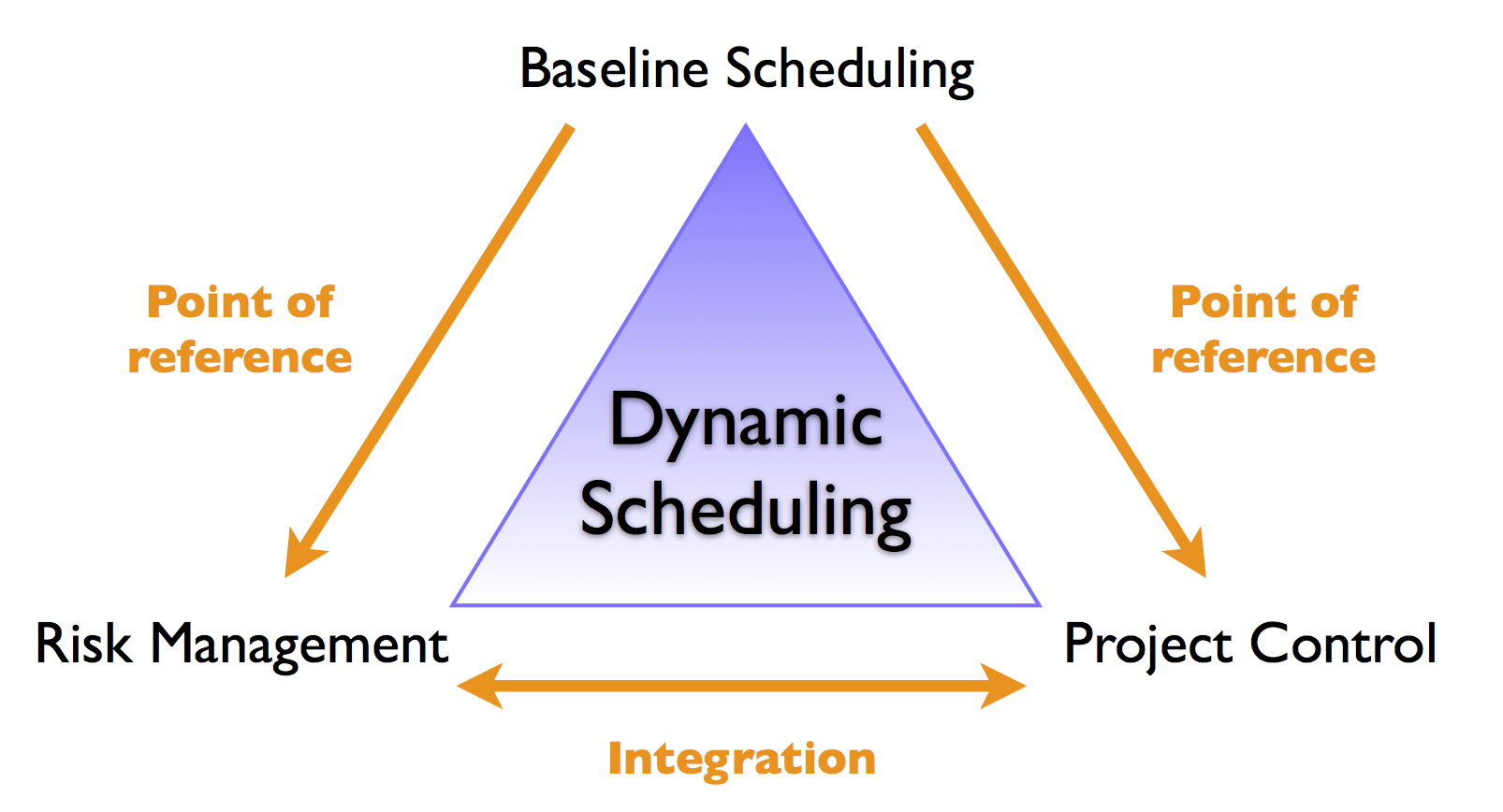Dynamic scheduling: An introduction to risk management
Submitted by Mario Vanhoucke on Mon, 02/06/2012 - 17:13

Since uncertainty is what typifies projects in progress, risk management is key to the success of a project. A technique known as Schedule Risk Analysis connects the risk information of project activities to the baseline schedule and provides sensitivity information of individual project activities as a way to assess the potential impact of uncertainty on the final project duration. The protection of a project’s deadline using a technique called Critical Chain/Buffer Management assures that delays in project activities are captured by buffers that are cleverly inserted into the project baseline schedule.
The analysis of a project schedule’s risk and its management through the use of detailed risk information and the incorporation of buffers is key to the success of a project. However, risk management is not a goal in itself, but rather it serves as a tool to improve and steer the project control phase (see “Dynamic scheduling: An introduction to project control”). Indeed, the combination of the baseline schedule (see “Dynamic scheduling: An introduction to baseline scheduling”) and the risk information should be interpreted and used as a point-of-reference to reveal threats and opportunities during the project progress.

Figure 1. Dynamic scheduling: the baseline schedule, risk management and project control triangle?
The schedule risk analysis topics of PMKC have been classified in the following categories:
- Schedule risk analysis
- Buffer management
For an overview of the three dynamic scheduling dimensions, see figure 1 or “Dynamic scheduling: Welcome to PM Knowledge Center”. The different categories are briefly explained below. Further details on these topics can be found in the summary articles of PMKC.
Schedule risk analysis
Schedule Risk Analysis is a technique that allows you to refine the traditional Critical Path Method (CPM) to degrees of criticality and risk. It connects the risk information of project activities to the baseline schedule and provides sensitivity information of individual project activities as a way to assess the potential impact of uncertainty on the final project duration and cost. In doing so, it gives the project manager an idea on how dangerous/sensitive/risky an activity is for the project objective.
Buffer management
The Critical Chain/Buffer Management approach assumes the construction of a resource feasible schedule as described in “Dynamic scheduling: An introduction to baseline scheduling”, but incorporates a certain degree of flexibility in the activity start times in order to easily monitor schedule deviations and quickly respond by taking corrective actions to keep the whole project on schedule. It is based on the novel “Critical Chain” by E. Goldratt using his Theory of Constraints.
© OR-AS. PM Knowledge Center is made by OR-AS bvba | Contact us at info@or-as.be | Visit us at www.or-as.be | Follow us at @ORASTalks


